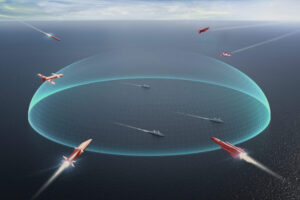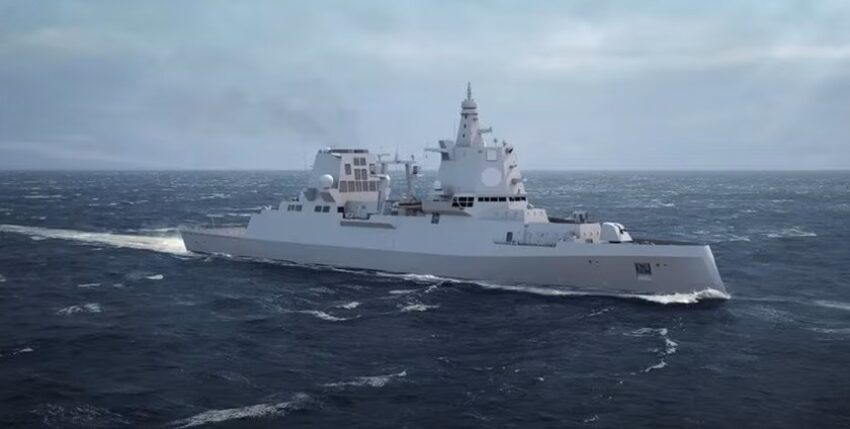The federal government has not yet placed the order for the construction of the new F127 anti-aircraft frigates, but the Defence and Budget Committees have approved the first funds.
On 18 December 2024, the members of both committees voted in favour of concluding a contract with the US defence contractor Lockheed Martin. Lockheed Martin is to use the initial funding of 44.5 million euros to conduct a study to examine whether the Aegis system and the ultimately favoured design of the F127 with a focus on anti-air warfare (AAW) and ballistic missile defence (BMD) are a good match.

The money for this air defence system comes from the special fund set up in 2022 to strengthen the Bundeswehr's alliance and defence capabilities.
It remains to be seen who and how many frigates the German government will actually order. In its 'Navy 2035+' target vision, the German Navy assumes that six F127 frigates will be available from 2035. The ships are needed to replace the Sachsen-class frigates (F124) and fulfil the obligations to NATO. Experts anticipate an order volume of around 15 billion euros.
Possible parameters of the F127 frigate
| Length | 160 metres |
| Width | 21 metres |
| Deployment displacement | 10,000 tonnes |
| speed | 32 knots to keep up with US carrier units |
| Crew | 150 Px, a further 70 berths for management and special tasks |
| Air defence | Aegis system, long-range airspace surveillance radar |
| Sea endurance | at least 30 days with a range of approx. 4,000 nautical miles |
kdk, NDR











3 responses
Dear Editor,
I would like to echo Mr Scholz's question. I noticed the retracted bow on computerised pictures a long time ago. Whether it is suitable for combat operations in the Atlantic is not clear to me. I would like to remind you that in WW2 several large German units had to be retrofitted with a wide, so-called Arlantiksteven because the forecastles took far too much water.
With kind regards
Horst Hombrecher
Dear Mr Hombrecher and Mr Scholz, thank you very much for your comments.
Basically, the different bow shapes in shipbuilding are always about sea behaviour and stability issues. This is why the various bow shapes, such as the bow bulb or X-bow, are always compromises.
The bow bulb, which quickly became established in merchant shipping, only saves fuel and propulsion power through reduced friction (reduction of the bow wave) when optimally loaded (otherwise rather disadvantageous). In addition, buoyancy forces are increased.
The advantages of the X-shape lie in the lower flow resistance and enable higher speeds in heavy seas. Ships with an X-bow and without a bow bulb, whose sterns tilt backwards above the waterline, generate smoother sea movements.
The question of "splash protection" against water and spray is a different one. Even on the Lütjens-class destroyers (Z103) with the raised Atlantic bow, the personnel on the forecastle got wet. With swell, wind, high waves and appropriate ship speed, the spray still knocked on the bridge windows or sometimes entered the signal deck above the bridge. Only raised bulwarks on the forecastle or a superstructure offer a remedy here.
Yours sincerely
For the editorial team
Klaus Klages
Dear team,
in the picture above, the shape of the bow of the F 127 is striking. are we really going back to the ship shapes of the turn of the century before last in this respect?
Yours sincerely
Gunter Scholz